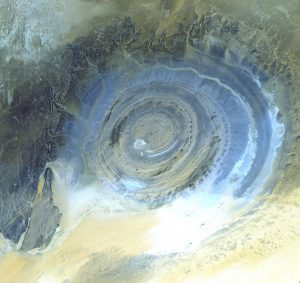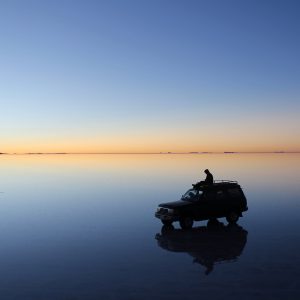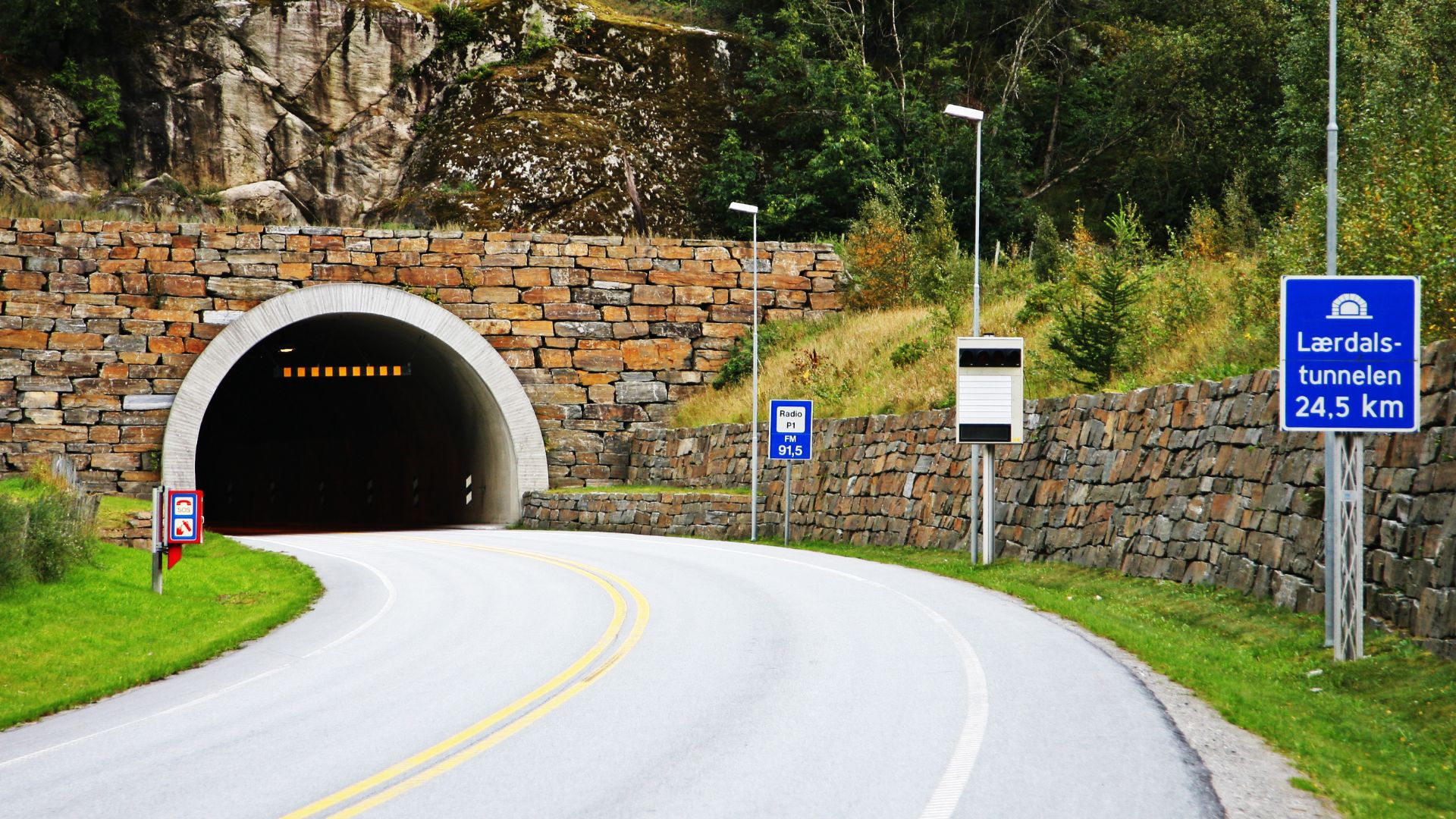The world's best natural wonders are arguably even more impressive than the man-made ones, since no intelligence went into them whatsoever. All it took to create Yellowstone was volcanism and millions of years of time. No trade can ever compare to the result.
So let's take a look at 35 of the most amazing and mysterious natural wonders that the world has to offer.
 Photo by Hendrik Cornelissen on Unsplash
Photo by Hendrik Cornelissen on Unsplash
1. Mount Roraima
Mount Roraima rises at the point where the borders of Brazil, Venezuela, and Guyana meet. Roraima is a tepuy or table mountain, a sort of plateau raised to a height of 2,800 metres. Its isolation combined with its unique geography have led Roraima to become the home of many unusual species of plants and animals. Among the more interesting residents are carnivorous Pitcher plants.
Visitors can climb the mountain, but only from one side.
 Image by Mount Roraima.
Image by Mount Roraima.
2. The Valley Of The Moon, Argentina
Covering more than 230 square miles, Ischigualasto Provincial Park in Argentina is remote and desolate to the point of otherworldliness -- hence its more famous moniker, the Valley of the Moon. Millions of years of erosion and wind have created a landscape that truly does look like something from another world. Of particular note are the improbable rock formations.
Of course, some of the world's oldest dinosaur fossils have been found here as well. If nothing else, that should remind you which planet you're on.
 As578/Wikimedia A wind-eroded rock formation in the Valley of the Moon.
As578/Wikimedia A wind-eroded rock formation in the Valley of the Moon.
3. Fingal's Cave, Scotland
Fingal's cave is a water-filled cave accessible from the sea. What makes it special are the basalt columns that make up the whole interior, long stone hexagons that look exactly as if they were carved by stone masons and intentionally positioned to hold up the ceiling of the cavern. It's one of the most spectacular geological formations on Earth because it looks like it couldn't possibly be a geographic formation.
But it is. It was formed by lava flows 50-60 million years ago. The unique circumstances under which the lava cooled caused a hexagonal pattern of fractures in the rock that ultimately created these natural pillars in a cave on an island off the Scottish mainland.
 dun_deagh/Flickr Fingal's Cave.
dun_deagh/Flickr Fingal's Cave.
4. The Richat Structure, Mauritania
Also known as the Eye of the Sahara, the Richat Structure is one of the most mysterious places on Earth. It's an enormous 25-mile wide ellipse in the middle of the Sahara Desert where stone peaks through the sands. From space, it looks something like the eye of a hurricane.
The Eye wasn't formed by an impact from outer space, and so far a comprehensive explanation of this bizarre and beautiful feature has proven elusive.
 NASA The Richat Structure seen from space.
NASA The Richat Structure seen from space.
5. Salar de Uyuni, Bolivia
Even if the name doesn't ring a bell, you've most likely seen pictures of Salar de Uyuni, the famous Bolivian salt flats. It is, in fact, the largest such feature in the world, stretching for more than 4,000 square miles. The average difference in elevation across this entire area is less than one metre, making it one of the flattest places on earth as well.
Salar de Uyuni is especially beautiful after it rains. The thin layer of water combined with the extreme flatness and salinity makes the whole basin into a giant mirror where it's hard to tell earth from sky.
 Photo by Lucas Metz on Unsplash Salar de Uyuni.
Photo by Lucas Metz on Unsplash Salar de Uyuni.
6. Devils Tower, Wyoming
I like big buttes and I cannot lie.
Devils Tower is one of the most distinctive buttes ("byoots") in the United States. At 867 feet tall, it towers above the Belle Fourche River rambling below. President Theodore Roosevelt must have been impressed by it, because he actually made Devil's Tower the first national monument in 1906.
More than 400,000 people still visit every year, and some of them are bold enough to climb its steep edges. It must be quite a view from the top.
There are a number of theories as to how the Devils Tower formed, but none commands a consensus.
7. Lake Hillier, Australia
Lake Hillier in Southern Australia is only about 2000 feet by 800 feet. You might think there's nothing extraordinary about such small and out-of-the-way body of water until you see its colour. Lake Hillier is pink.
The reason is the microscopic organism Dunaliella salina, a form of algae that feeds on the salt in the lake. The pink hue is simply a bi-product of the algae. But it does make Lake Hillier look like a pool of Pepto-Bismol.
Although the lake is safe to swim in -- albeit extremely salty -- it is located on an uninhabited island and is thus quite difficult to reach.
 Aussie Oc/Wikimedia Lake Hillier.
Aussie Oc/Wikimedia Lake Hillier.
8. Koekohe Beach, New Zealand
Koekohe Beach is a typically lovely strand in the south of New Zealand's South Island. What makes it interesting are its rocks, known as the Moeraki boulders, many of which are uncommonly large and spherical, almost like enormous petrified bowling balls.
According to oral legends passed down for centuries by the local Māori people, the stones are the remains of eel baskets that washed ashore after a giant canoe was wrecked out at sea.
The scientific explanation is that the rocks were slowly accreted in the mud over millions of years, and have subsequently been brought back to the surface by erosion.
 Karsten Sperling/Wikimedia Some of the Moeraki boulders.
Karsten Sperling/Wikimedia Some of the Moeraki boulders.
9. The Chocolate Hills, Philippines
They may look delicious, but you still shouldn't eat them.
These small, conical, grassy hills are spread over an area of about 20 square miles in the province of Bohol. Interestingly, it's not clear just how many there are, but common reckonings put the number at between 1,200 and 1,700.
They derive their name from the fact that the grass which covers them browns during the dry season, creating the illusion of a Hershey highland rippling out into the distance.
There are a number of legends which explain the formation of the Chocolate Hills. Probably the best is the story of a giant who long ago fell in love with a mortal woman. When she died, his tears rained down on the island, and hardened into the hills we see today.
 Image by The Chocolate Hills.
Image by The Chocolate Hills.
10. Seljalandsfoss, Iceland
Seljalandsfoss is perhaps the most spectacular waterfall in Iceland, and that's saying a lot.
The river that feeds it runs out of Eyjafjallajökull, the volcano whose 2010 eruption paralyzed air travel in Europe for more than a week back in 2010.
Although the waterfall is comparatively small, dropping less than 200 feet, what really make it special is the view you can glean from the cave behind the waterfall. As much as I hate selfies, this is one place you seriously want to grab one.
 Photo by Lucas Davies on Unsplash Seljalandsfoss waterfall, Iceland.
Photo by Lucas Davies on Unsplash Seljalandsfoss waterfall, Iceland.
11. Eisriesenwelt, Austria
Have you ever wanted to live out your Lord of the Rings fantasy and actually go inside a mountain? Well, Eisriesenwelt, near Salzburg, may be the best place on Earth to do it. It's the world's largest ice cave, extending more than 20 miles inside the mountain Hochkogel.
The ice caverns were formed by a mighty river; the ice part comes courtesy of snow melts which leaked into the cave and then froze in the winter. Nowadays, the Eisriesenwelt is frozen even in the summertime, as the cold, firm breeze helps keep heat from sinking into its depths and melting the frost.
 Image by The Eisriesenwelt.
Image by The Eisriesenwelt.
12. Cave of the Crystals, Mexico
Mexico's very own cave of wonders, this one lives up to its name. The cave holds some of the largest natural crystals ever discovered, and in quantities that are quite staggering to see.
The crystals form because heat rises from a magma chamber below the cave. As the cave cooled over time, minerals within the water were distilled and left to form the enormous crystal deposits we see today.
Well, I shouldn't say 'today'. Unfortunately, the cave was attached to a working mine which closed in 2017. When the mine closes, the cavern was allowed to flood again, meaning it is no longer accessible. Still: here's a cool picture!
 Wikimedia. The Cave of the Crystals. RIP.
Wikimedia. The Cave of the Crystals. RIP.
13. Door To Hell, Turkmenistan
This one is a little bit of nature and a little bit of human intervention. But the effect is pretty impressive and surreal.
Back in the early 1970s, when Turkmenistan was still part of the Soviet Union, people were drilling in the area. They thought they would find a massive deposit of natural gas. Unfortunately, as a result of preliminary drilling, the pocket of gas collapsed into a crater.
The miners were worried methane gases would escape and harm local residents, so they decided to set the pit on fire and burn all the gas away. This was meant to take a week or two; instead, the "door to hell" has been burning since 1971.
The effect is particularly powerful at night, when it literally looks like the gates of the underworld opening up beneath your feet.
 Photo by Ybrayym Esenov on Unsplash The Door to Hell.
Photo by Ybrayym Esenov on Unsplash The Door to Hell.
14. The Twelve Apostles, Australia
This one does not live up to its name. The 'Apostles' are limestone rock stacks off the cost of Victoria, Australia; they're impressive and terribly photogenic, but there were only ever 8 of them in close proximity. (There are 7 now, as one has collapsed.)
Like most impressive coastal features the world over, the Apostles were formed by millions of years of erosion. They rise as high as 160 feet above the surf.
The best place to view them is from the rocky escarpment above the beach, from which you can see all 8 (7) of the Apostles. Again, if you ever find yourself here... it's probably selfie time.
 Image by The Twelve Apostles.
Image by The Twelve Apostles.
15. Lake Louise, Canada
Lake Louise is only one wonder among many in Canada's Banff National Park in the Rocky Mountains. But it is an especially elegant body of water, noted for its bright turquoise hue. Indeed, it almost seems to glow.
The reason for Louise's cloudy, seemingly incandescent appearance is that the lake is fed by melted glacier ice that trickles down through the surrounding mountains. This ice contains tiny rock granules that give the lake its distinctive coloration.
Lake Louise is just of the Trans-Canada highway and is a must-stop if you're taking a road trip across Canada.
 Photo by Roberto Nickson on Unsplash Lake Louise.
Photo by Roberto Nickson on Unsplash Lake Louise.
16. White Desert National Park, Egypt
Oh erosion! Where would we be without you? So many of the coolest landscapes on Earth owe everything to the slow withering of time, wind, and water.
White Desert National Park is no exception, presenting one of the most unusual vistas you'll ever see. Its cliffs and titular white dunes are one thing, but its peculiar, chalky rock formations are quite another. Naturally, they were whittled out of the sands for us by... wind erosion.
From a distance they almost look like little Sphinxes, lost, faceless icons hewn from the sea of dust by some forgotten craft of the Pharaohs.
 Roland Unger/Wikimedia A chalk formation in White Desert National Park.
Roland Unger/Wikimedia A chalk formation in White Desert National Park.
17. Mono Lake, California
Not the most flattering name, admittedly, but Mono Lake is certainly interesting. It's a soda lake, which is less delicious than it sounds. Basically, Mono Lake is so salty that it's actually alkaline -- a result of the fact that its waters have nowhere to drain.
Despite the high salinity, the lake boasts a vibrant ecosystem, and is popular with migrating birds who stop to nibble on shrimp and flies who live here.
Mono Lake is also noted for the limestone 'tufa towers' that rise above its surface.
 Image by Mono Lake and some of its tufa towers.
Image by Mono Lake and some of its tufa towers.
18. Reed Flute Cave, China
Reed flute cave has been a popular tourist attraction since before tourism was even really a thing; visitors have been coming here since at least 1,200 years ago. We know because 8th century spelunkers left behind graffiti!
The 240 metre cave was long forgotten, however, and only rediscovered in the 1940s when locals sought refuge in its depths from the invading Japanese.
It derives its name from the reeds which grow outside in the sunshine. Apparently, they make excellent flutes.
 Dariusz Jemielniak/Wikimedia Reed Flute Cave, with the benefit of artificial lighting.
Dariusz Jemielniak/Wikimedia Reed Flute Cave, with the benefit of artificial lighting.
19. Pamukkale, Turkey
Pamukkale is basically an enormous limestone deposit that has built up over a natural hot spring. And I do mean enormous: 8,800 feet long, 2,000 feet wide, and 160 feet high. Natural spring waters still bubble and run down its smooth white surface, collecting in natural terraced pools.
You can also see some human history while you're here, since the ancient city of Hierapolis once sat atop Pamukkale.
That name, by the way, means "cotton castle" in Turkish. Legend has it the formation was made by cotton that was left in the sun to dry by giants.
 Image by Pamukkale and its breathtaking travertine terraced pools.
Image by Pamukkale and its breathtaking travertine terraced pools.
20. Socotra Island, Yemen
Socotra Island is part of Yemen, but it's just off the coast of the horn of Africa, from whence it was cast adrift millions of years ago. This separation from the mainland has led Socotra to become home to many species of plants and animals that you won't find anywhere else. For this reason, it has sometimes been called the most alien place on Earth. Of particular note are its beautiful and unusual trees.
 Boris Khvostichenko/Wikimedia The Dragon's Blood Tree, one of the more interesting endemic species on Socotra.
Boris Khvostichenko/Wikimedia The Dragon's Blood Tree, one of the more interesting endemic species on Socotra.
21. Red Beach, China
Peculiar and beautiful, this marshy 'beach' in China is covered in a plant called Sueada salsa. Light red when immature, it turns deep red by autumn, spreading out to the distance like a great carpet and giving the area its name. This is also a popular destination for bird watchers, since 260 species of birds live here and in the surrounding wetlands.
 吴张帆/Wikimedia The Red Beach. You won't need a volleyball.
吴张帆/Wikimedia The Red Beach. You won't need a volleyball.
22. Glass Beach, California
And now for a totally different kind of beach. For one thing, it has a shoreline where you can frolic and play and enjoy that incomparable California weather; for another, it's actually made of garbage.
Many years ago, the town of Fort Bragg took to dumping garbage into the ocean not far from the beach. Over time, however, the waves broke down the glass, and moulded it into genuinely spectacular pebbles and granules, which now line the aptly-named Glass Beach. It's a bizarre story about nature's power to correct human folly.
Of course, humans have a way of strangling phoenixes risen from the ashes. Now Glass Beach is at reach because too many people have been stealing its garbage pebbles!
 Ggerdel/Wikimedia Glass Beach, and its famous pebbles.
Ggerdel/Wikimedia Glass Beach, and its famous pebbles.
23. Hang Sơn Đoòng, Vietnam
Hang Sơn Đoòng is the widest cavern in the world, twice as voluminous as number two, and spectacularly beautiful. About 5.5 miles long and descending to a depth of 500 feet, a subterranean river runs through the cavern. Hang Sơn Đoòng is also home to some of the largest stalagmites in the world.
 Son Doong-47/Wikimedia Hang Sơn Đoòng cave.
Son Doong-47/Wikimedia Hang Sơn Đoòng cave.
24. Waitomo Glowworm Caves, New Zealand
It's all there in the name. The Waitomo Caves' claim to fame is the spectacular glow provided by the Arachnocampa luminosa glow worms who live on its walls and ceilings, shimmering an ethereal blue-green in the gloom.
There are hundreds of caves in the Waitomo area, some of them interconnected. You can take a boat tour through this system, but don't strain your neck looking up at the glow worms!
 Donnie Ray Jones/Wikimedia The Waitomo Caves and their famous glow worms.
Donnie Ray Jones/Wikimedia The Waitomo Caves and their famous glow worms.
25. Caño Cristales, Colombia
This Colombian river is often called "the liquid rainbow"--for obvious reasons. Here, the waters rush past in vibrant reds, yellows, blues, and greens. The coloration comes from plants called Macarenia clavigera that live on the bed of the river. However, this transformation only occurs between the rainy season and the dry season, for a brief time every year. If you're in the area, it's worth making the trek to see.
 Mcleods08/Wikimedia Caño Cristales river, alive with color.
Mcleods08/Wikimedia Caño Cristales river, alive with color.
26. Zhangye National Geopark, China
From rainbow rivers to rainbow mountains.
Over 24 million years, sandstone deposits were smashed together here, creating massive hills and rock formations that are rippled with bands of color. The lines are so clear and so constant you could swear someone had painted them on with the world's largest brush.
 Image by Zhangye National Geopark.
Image by Zhangye National Geopark.
27. Bryce Canyon National Park, Utah
Bryce Canyon is one of the most beautiful natural treasures of the United States. Its hoodoos (narrow rock pillars) sit like members of the audience in a giant amphitheatre, carved from the earth over countless millennia by frost and erosion.
Although Bryce Canyon is remote, it is spectacular, and much less busy than the more famous National Parks at Zion and Yellowstone. You'll have a much better chance of exploring in peace.
 Jean-Christophe BENOIST/Wikimedia Bryce Canyon, Utah.
Jean-Christophe BENOIST/Wikimedia Bryce Canyon, Utah.
28. Silfra, Iceland
Have you ever wanted to actually explore the crack between two tectonic plates? Head to the Silfra rift in Iceland, where the North American and Eurasian plates go their separate ways.
The fissure runs right through a lake in Þingvellir National Park. Swimmers and divers are drawn to it both because the waters are clear and clean and because its an irresistible novelty to explore the dividing line between tectonic plates. If you stare long enough, you might just see some continental drift.
 Diego Delso, delso.photo, License CC-BY-SA The Silfra fissure.
Diego Delso, delso.photo, License CC-BY-SA The Silfra fissure.
29. Punaluʻu Beach, Hawaii
Punaluʻu Beach is one of the most memorably on the Big Island of Hawaii, mainly because of its black basalt sand. It's a beautiful and distinctive look, but if that's not enough you can also get an up close and personal look at endangered turtles who love to lounge in the sun here. Just make sure not to leave anything behind that could endanger the turtles.
Also, make sure to take care of yourself: the shoreline is fairly rocky, a result of the volcanic activity that gives the beach its color.
 Brocken Inaglory/Wi Punaluʻu Beach, Hawaii.
Brocken Inaglory/Wi Punaluʻu Beach, Hawaii.
30. Spotted Lake, Canada
British Columbia's Spotted Lake is another aptly named wonder. It's a mineral rich body of water that largely dries out during the summer, leaving behind spots of bright color -- differing depending on their mineral compositions. The lake is so full of minerals, in fact, that its contents were used to manufacture weapons during WWI!
 kliluk/Flickr Spotted Lake, British Columbia.
kliluk/Flickr Spotted Lake, British Columbia.
31. Mudhdhoo Island, Maldives
On Mudhdhoo Island in the Maldives, the best time to hit the beach is at night. That's because the waves are often infused with bioluminescent plankton which shine a brilliant blue in the surf. The plankton's lights are triggered by the lull of the waves, since they're sensitive to motion.
Of course, there's no guarantee of seeing them. It depends on the season -- and also on sheer luck.
 Bruce Anderson (University of Stellenbosch)/Wikimedia
Bruce Anderson (University of Stellenbosch)/Wikimedia
32. Marble Caves, Chile
On the coasts of Patagonia, millennia worth of waves have carved wave-shaped caverns into the soft rock. The blue of the water reflects off the roof, giving the whole world a bright blue hue. The marble caves are only accessible by boat, but worth gaining your sea legs for.
 Javier Vieras/Flickr The Marble Caves.
Javier Vieras/Flickr The Marble Caves.
33. Danakil Depression, Ethiopia
Three tectonic plates pulling apart have created one of the hottest and most volcanic places on Earth in the Danakil Depression. In fact, where average temperatures are concerned, this is literally the hottest place on our planet.
Volcanoes, hot springs, and sulphur springs bubble and roil here, yellowed from salt deposits. It's also home to several species of extremophiles -- species that flourish in 'uninhabitable' environments. Scientists study these to try to learn how life might evolve on other worlds.
 Image by The Danakil Depression.
Image by The Danakil Depression.
34. Puerto Princesa Subterranean River National Park, Philippines
It's exactly what it sounds like, and it's incredibly beautiful. You can take a boat tour through more than 5 miles of underground river (the cave system itself is more than 24 miles long). There are huge underground rooms, stalagmites, stalactites, and even subterranean waterfalls.
Outside, the surroundings are equally beautiful, with limestone karsts looming over the waterways.
 Glennjarz/Wikimedia Puerto Princesa Subterranean River National Park.
Glennjarz/Wikimedia Puerto Princesa Subterranean River National Park.
35. Arches National Park, Utah
What's the deal with Utah? They sure seem to have more than their share of natural beauty, and Arches National Park is a big part of that.
There are more than 2,000 sandstone arches over 120 square miles here. They formed millions of years ago when a lake flooded the region and subsequently evaporated, leaving a massive salt bed.
Unfortunately, the area is actually surprisingly vulnerable to damage by an excess of human foot traffic, so it's important to make sure you're not doing anything to threaten this national treasure.
 Image by Arches National Park.
Image by Arches National Park.








